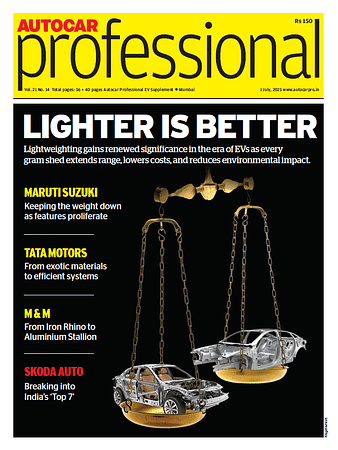Siemens eyes growing PLM market in India
With the Indian auto industry expected to adopt PLM in a far bigger way than before, Siemens is keen to take advantage of the opportunity.
BRIC countries will continue to be a major growth driver for Siemens PLM (Product Lifecycle Management), a business unit of the Siemens Industry Automation Division. Significantly its automotive business, which currently constitutes a large chunk of its revenue, will witness heavy investments going forward.
Over the years, the software solutions provider has developed specialised software for powertrain development, chassis systems and electrical systems in automobiles and also software for die engineering to help create dies, to create body-in-white surfaces, interiors and varied aspects of the vehicle design.
Auto focus
Siemens PLM helps some of the leading automotive companies in the world innovate at an enterprise-level through easier collaboration and knowledge sharing across global teams. The PLM software enables OEMs and suppliers to optimise resources at every step of the production cycle while minimising errors and managing compliance issues. Fourteen out of the top 15 OEMs in the world, including Volkswagen, Nissan, GM, Maruti Suzuki, Tata Motors, Daimler and Ford, use the company’s PLM software to maintain their global operations and supply chain.
Kirk Gutmann, global head, vice-president, automotive strategy, Siemens PLM, who was recently in India, says the company also has specialised software for sub-systems and the automotive segment that contributes about 30 percent of its business both globally and in India.
The company offers software solutions to manufacturing companies and manages product lifecycle right from the concept to the manufacturing process. Its application software for parts caters to the automobile and aerospace sectors. New-generation technologies necessitating adoption of advanced software are expected to further the company’s investments and growth in India.
With the economic slowdown affecting European carmakers substantially, the relatively unaffected BRIC countries are slated to become high-growth regions. Furthermore, with vehicle content and engineering rising and turning more complex, Siemens PLM expects its revenue to grow in tandem. According to Gutmann, global trends are indicative of a shift towards electric and hybrid vehicles as the key growth drivers with their development creating challenges on the design side. Hence, Siemens’ focus on systems-driven product development with tools favouring the electrical and software elements in a vehicle. Siemens is investing further in its software to adapt to changing vehicle dynamics and is in talks with customers to market its software in India.
Strategically, Siemens perceives electrics and hybrids such as diesel hybrids as big opportunities, even in India although they do not have much of a presence here at present. However, the solutions provider is optimistic of witnessing competition between alternative systems of power leading to different markets sorting out this issue at varied rates.
Growth in India
For Siemens, India figures as a net technology exporter for its business units. It has a large product development facility at Pune with a manpower strength of over 1,000, a large facility for supporting its global customers as they implement the software with an offshore delivery team at Pune, as well as a competency centre at Bangalore that offers consultancy services across Asia-Pacific.
 |
A large part of the application software for global OEMs is developed in India, leveraging one of the largest R&D facilities outside the US for all passenger cars ranging from compact cars to large luxury saloons. Audi and Tata Motors are the company’s biggest customers though it is working with almost all large OEMs and Tier 1 suppliers in India such as Bajaj Auto, Hero MotoCorp, Mahindra & Mahindra, Maruti Suzuki, AMW, Subros, Kalyani Group, Brakes India and the Minda Group.
Recently, Siemens PLM released a new version of Teamcenter 9.1, the PLM software that coordinates all information across departments, ties design, electricals, fixtures and lifecycles of a vehicle. Capability has been added to interface systems from MathWorks software or from Microsoft to capture the interaction between mechanical and electrical systems. A lot of it will support the development of hybrids and electrics.
Lightweighting is also a key focus area for the company, for which it has acquired the US-based VistagyInc, a leading supplier of specialised engineering software and services with emphasis on designing and manufacturing structures made of advanced composite materials.
SHOBHA MATHUR
RELATED ARTICLES
Modern Automotives targets 25% CAGR in forged components by FY2031, diversifies into e-3Ws
The Tier-1 component supplier of forged components such as connecting rods, crankshafts, tie-rods, and fork bridges to l...
VinFast’s second plant in Vietnam goes on stream ahead of India factory
Vietnamese EV maker’s second plant in its home market, which has a 200,000 EVs-per-annum capacity, will focus on produci...
Continental exits TBR market in India, shifts focus to car and SUV radials
German tyre manufacturer aims to tap the double-digit market growth opportunity for big SUV and luxury car tyres which w...





 By Autocar Pro News Desk
By Autocar Pro News Desk
 16 Jul 2012
16 Jul 2012
 8252 Views
8252 Views





 Autocar Professional Bureau
Autocar Professional Bureau




